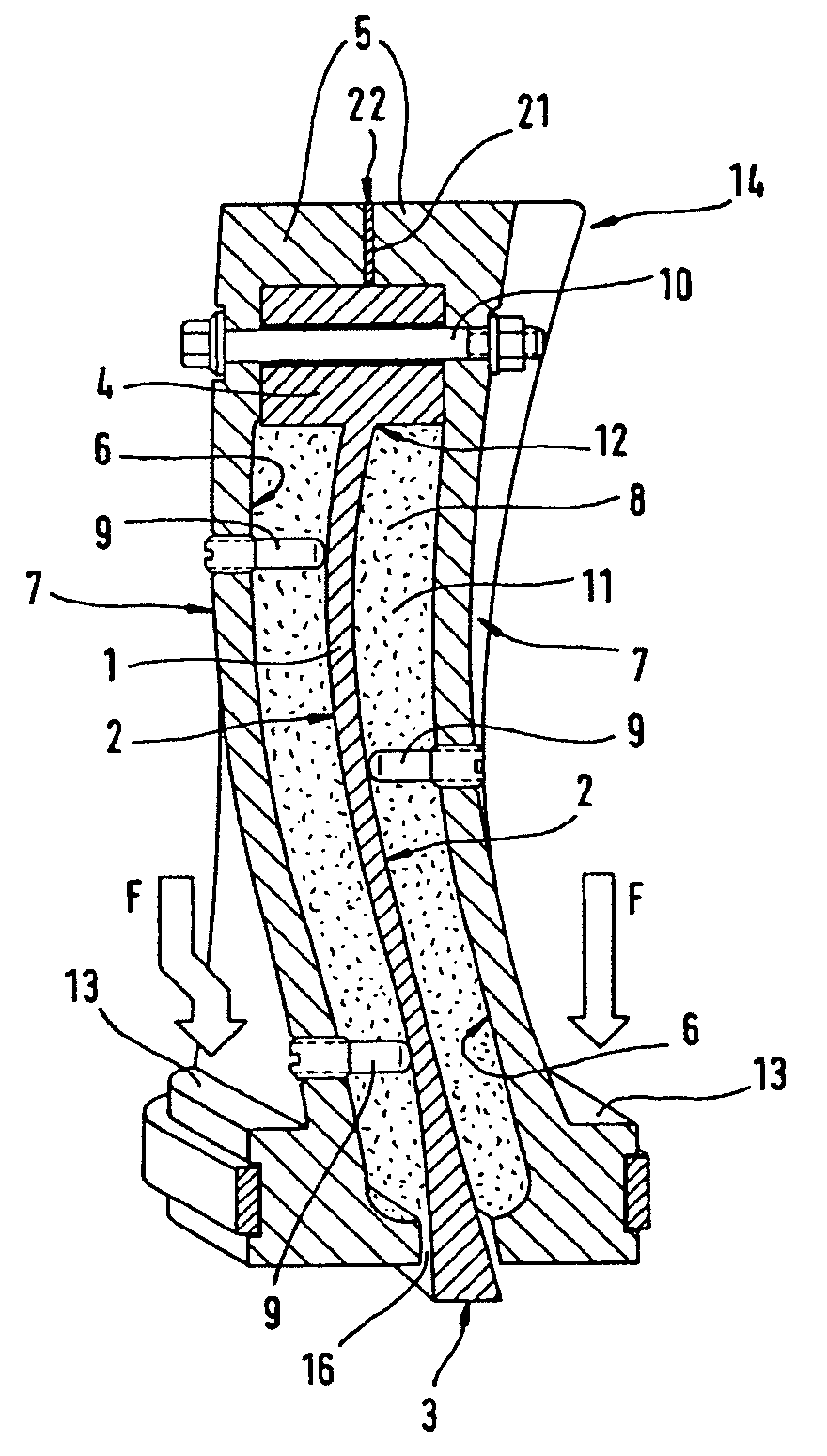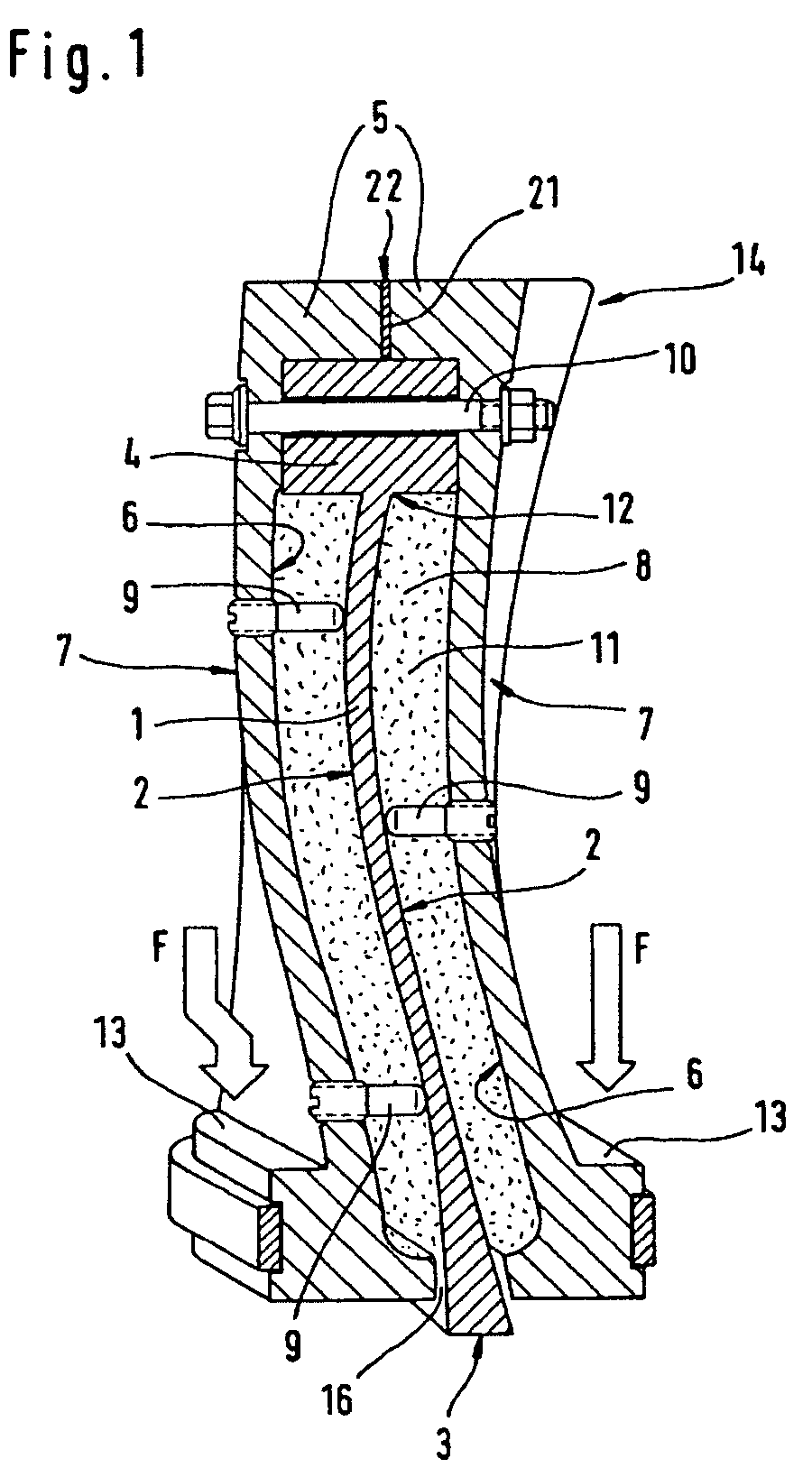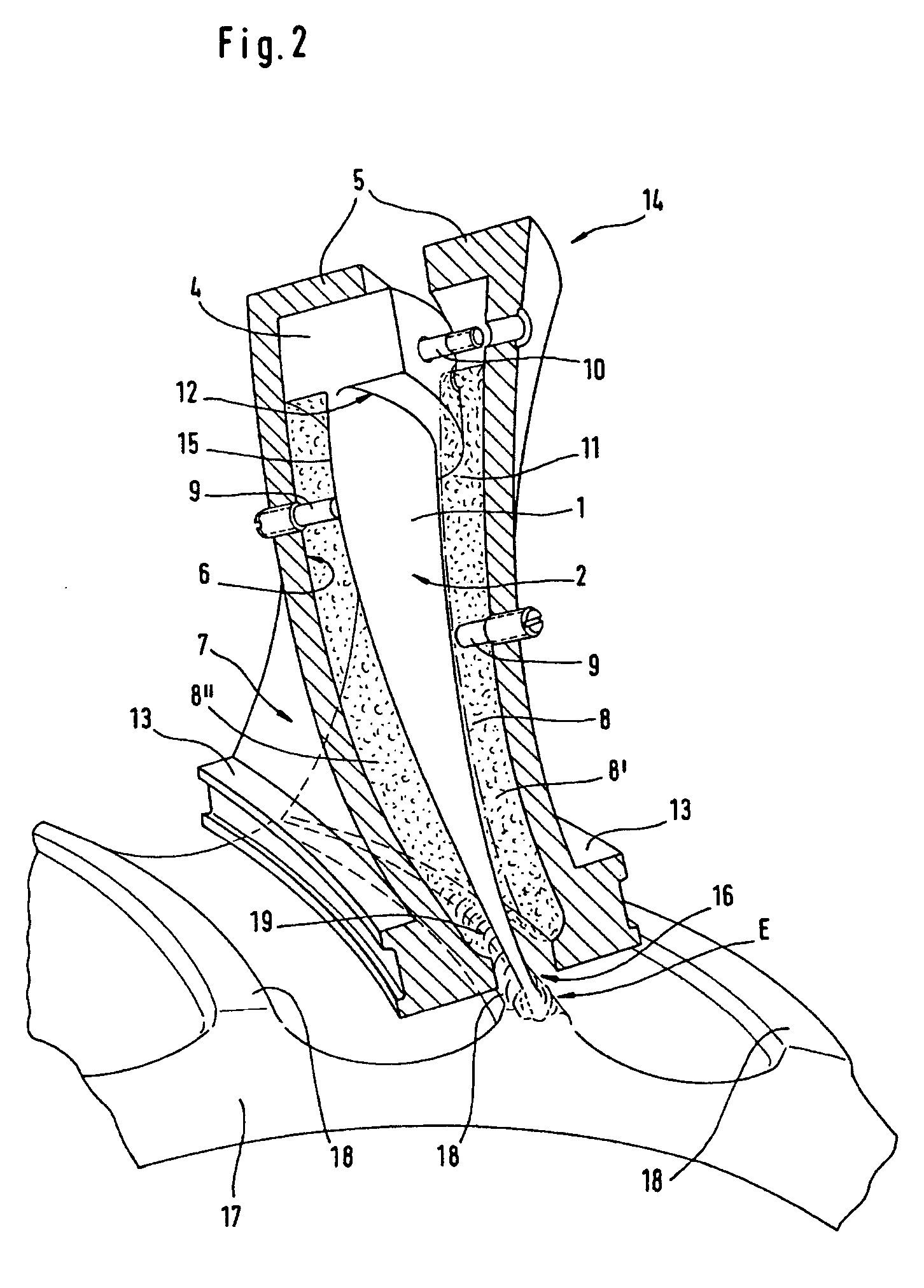[0005] One
advantage of the method according to the invention for holding a metallic component which is to be connected is that the component is held areally, rather than in punctiform fashion, and consequently there is no punctiform loading of its surface. The foam structure, which is dimensionally stable after cooling to ambient temperature, nestles virtually completely against the surface of the component to be connected and represents play-free, rigid, positively locking
coupling to the component directly or between the case, the foam structure and the component. The surface or outer
skin of the foam is so homogenous and compact that there is no damage to the surface of the component to be connected. Otherwise, the foam structure is cellular and has a
porosity. For the component to be connected to further components by
welding or other suitable joining processes, therefore, it is possible for considerable forces to be introduced via the component, for example for pressing the joining surfaces together, without the surface of the component being damaged, the shape of the component being changed or additional large-volume formations having to be provided on the component for introduction of forces and then having to be removed again following the joining operation.
[0011] A releasable spacer element, preferably also made from steel, can be provided in the parting join between the parts of the case, in order to vary the volume in the case, so as to compensate for any shrinkage of the foam during cooling. The spacer element can be removed after cooling. Then, the parts of the case are fixed together, directly abutting one another, so as to reduce the volume around the component, and any shrinkage is compensated for, producing a rigid
coupling between case, foam structure and component.
[0013] Depending on the strengths and moduli of elasticity required in the subsequent joining operation, the foamable material used may be a plastic, such as for example
polystyrene or
polyurethane (PS or PUR), or a
metal, such as for example Al or Mg or Ni or Fe or an
alloy of these elements, individually in combination, in order to produce the foam structure. The strength and the modulus of elasticity of the foam structure which holds the component is dependent not only on the base material but also on the pore structure and generally rises approximately linearly with the
apparent density. The parameters used for foaming of said base materials are matched to the particular application in a manner with which the person skilled in the art will be familiar. The surface or outer
skin of the foam structure is closed, compact and not too rough, in order to protect the surface of the component.
[0016] The more base material is locally present in the semifinished product compared to
blowing agent, the higher the density after the foaming step, and consequently the lower the
porosity of the foam structure. Since the
compressive strength of the foam structure is approximately proportional to its density, it is possible to produce foam structures with variable compressive strengths. The foam structure which holds the component may have a lower
porosity and therefore a higher density and a greater
compressive strength at locations of the component which are subject to high forces during the further
machining than at other locations.
[0017] For a foam structure with a
high density, the semifinished product has to contain a large proportion of, for example, metallic base material compared to the
blowing agent. As the person skilled in the art will understand, the density of the foam structure can also be controlled by means of the ratio of the volume of the semifinished product to the closed volume for the foamable material in the case. A greater degree of play when the closed volume is being filled with the semifinished product leads to a greater porosity and therefore a lower density and a lower
compressive strength. The semifinished product may be formed or
cut from a large-area
metal sheet in a manner which is matched to the shape and size of the closed volume. For a closed volume, it is possible to combine a plurality of semifinished products with different ratios of base material to
blowing agent, so that it is possible to produce a locally different porous and therefore dense foam structure.
[0023] The main blade or vane part, for example after it has been cast or forged, may be provided such that it has at least one pin which projects coaxially with respect to its stacking axis from its main blade or vane tip and / or its main blade or vane root beyond the main blade or vane part. The pin may be formed with a circular cross section which is flattened in parts, in order, during positioning of the main blade or vane part in the case or following the formation of the foam structure during positioning of the main blade or vane part in a machining apparatus or
machine, to prevent twisting about the stacking axis.
 Login to View More
Login to View More 


